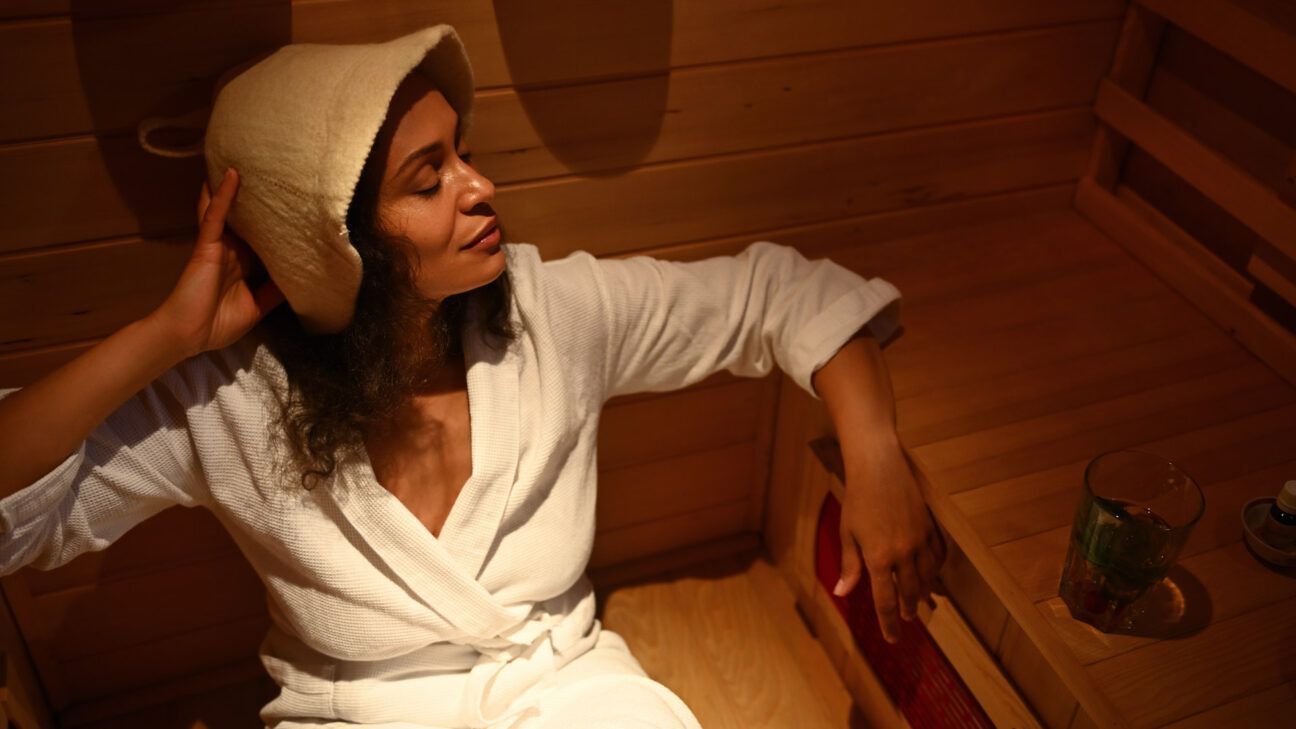If you have eczema and are considering using an infrared sauna, it’s best to talk with your doctor or dermatologist first.

Eczema is one of the most common chronic skin conditions, and the symptoms can have a big impact on someone’s quality of life. In fact, every single year, millions of adults and children lose time at work and school because of their eczema symptoms.
Treating eczema usually involves a combination of approaches, including medications, therapies, and lifestyle changes, all aimed at reducing symptoms and flare-ups. We know that light therapy can be an effective treatment for eczema ― but how about infrared saunas?
Below, we’ll discuss the possible benefits of using an infrared sauna for eczema, including things to look out for and how to find a high quality infrared sauna.
In a traditional sauna, the room is heated to a high temperature, typically between 110°F and 195°F (43°C and 90°C), depending on the type of heat. In a dry heat sauna, the temperature tends to be higher ― whereas in a wet sauna, or steam room, temperatures are usually lower.
An infrared sauna is slightly different than a traditional sauna because instead of heating the room, infrared saunas use electromagnetic radiation from lamps to heat your body directly. Generally, the temperature of infrared saunas ranges from 120°F to 140°F (49°C to 60°C).
Several studies show that an infrared sauna can have some health benefits, such as decreasing muscle soreness, reducing fatigue, and even lowering blood pressure. However, there’s very little research on the benefits of using infrared light for eczema.
One early
Another
At the end of the day, while
Is a sauna or steam room better for eczema?
Similar to dry saunas, infrared saunas use a type of dry heat to heat your body. Not only can this cause your skin to dry out ― something you typically want to avoid with eczema ― but it can also cause you to sweat more, which can trigger a flare-up.
As for steam rooms, some find that steam and extreme heat irritate their eczema, while others find the increased humidity soothing. Since everyone has different triggers, it’s best to discuss this option with your doctor to see if it could possibly help you.
However, because infrared saunas involve using direct light on the skin, prolonged exposure to these lamps may cause skin irritation. And if the lamps are too bright or too hot, there’s a risk of potentially burning the skin.
With that said, when used at an appropriate temperature for a short amount of time, infrared saunas are generally considered safe for most people.
If you’re interested in trying an infrared sauna for the first time, you have a few options. One option is to find a spa or sauna near you, and the other is to purchase your own to use at home.
What to look for in a facility
When visiting an infrared sauna, try to look for one that offers a wide range of infrared lights ― such as near-infrared, far infrared, and full infrared light. Also, consider vetting the facility ahead of time to make sure they follow hygiene and safety regulations.
What to look for in an at-home model
If you’d prefer to buy an infrared sauna for your home, there are a few things to consider. One of the most important things is how much space you have and how big the sauna is ― because most at-home models are quite large.
It’s also a good idea to consider what your budget is and what features you’re looking for. Obviously, with more features comes a higher price tag, so you might need to spend some time comparing the prices and features of different models.
As an alternative to traditional saunas, infrared saunas heat the body through the use of infrared lamps. While some studies have suggested that there are benefits to infrared saunas, there’s not much research exploring how infrared light therapy affects eczema.
If you live with eczema and are considering trying an infrared sauna, it’s best to do your research and talk with your dermatologist before visiting a sauna or purchasing one. Also, consider reaching out to your doctor for other treatment options that can help you manage your symptoms long-term.
